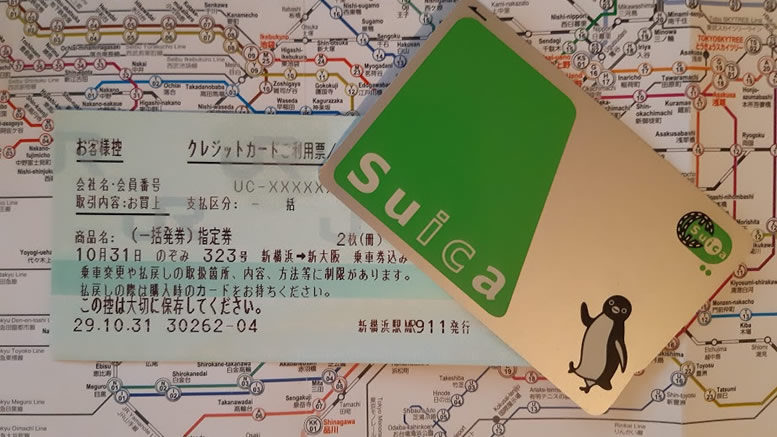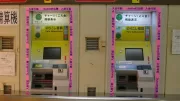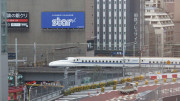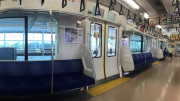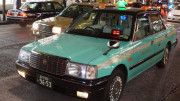Unlike most cities around the world, many of the large Japanese cities have multiple railway companies operating in the one city. This not only makes it challenging in navigation, but also in choosing the right ticketing option for your travels.
Let’s use Tokyo as our example. The city has a huge metro system consisting of thirteen different lines. Then there are the JR lines that link suburbs and other cities. There is the Shinkensen bullet train and other regional lines. There are several different operators running airport services and well as a number of other private companies running smaller rail networks.
For visitors coming from outside Japan there is the Japan Rail Pass, this pass is sold by JR and is a great way to get between cities and travel on regional rail. But if you are planning spending most of your time in the big cities, the pass can work out expensive and limit your available options as this pass only works on JR lines. It must be remembered that in the big cities that the subway may be a more convenient way to get to your destination. A city like Osaka is a good example of this, while JR have a large loop line around the city, the subway that passes through the centre of this loop is the best way to get to the major sights of Dotonbori, Amerika-mura and Shinsaibashi. So a pass specially designed for the city may be a much cheaper and sensible idea.
Purchasing separate tickets for your travels can become confusing and time-consuming as you need to calculate the cost of the ticket when you get to the station depending on where you want to go. There are some much better options that not only streamline your travels, but should work out to be much cheaper.
For city travel in and around Tokyo there are several great options and depending on your travel plans you might find a combination of more than one option is the cheapest and the most efficient way of exploring Tokyo.
JR offer a Y760 24 hour pass called the Tokyo Metropolitan District Pass (Tokunai Pass). It gives unlimited rides on local and rapid (non-reserved) JR East trains within the city’s 23 wards. This gives you easy access to many of the places you will want to visit. But the best value is the Metro’s Y600 day pass, offering unlimited travel throughout its enormous network of 13 lines. Both Metro and JR offer Combination tickets for Y1600 that will work across both networks and buses, but we suggest try to focus your travel on one network for the day, as you would need to do a lot of travel across both networks to make this pass worthwhile.
The third major option is the IC smart card system sold under various names like Suica, ICOCA, PiTaPa or Pasmo. Here you can purchase a (refundable) Y500 card and keep topping it up during your stay. Each time you go through a turnstile, the fare is deducted. These smart cards work on all networks, including the private lines and even the Disneyland monorail. You can also use the card for purchases from many vending machines and tap and go systems for small purchases in stores. The added bonus is that there is a tiny discount on each trip thanks to rounding, over a lot of trips it all adds up. Recently, foreign tourist versions of the cards have been introduced without the deposit fee. Known as Welcome Suica or Pasmo Pass, their disadvantages are that they only last for four weeks and don’t allow for refunds of the remaining balance. In contrast, the standard Suica card is more readily available, does allow for refunds (with a fee) and lasts for 10 years after the last activity. Since the launch of the iPhone 8, you can use these model phones or later with a service known as Mobile Suica that is set up within the Apple Wallet app. While an Android version of Suica does exist, it is only compatible with Japanese sold devices and unable to be used by foreign visitors.
Being recognised by all metropolitan networks (and in different cities) makes a smart card a great travel companion, and your ticket doesn’t expire like the 24-hour passes. But if you are travelling on numerous trains on the same day this system can become expensive and a day pass on one of the networks might be the cheaper option.
For many visitors, a combination of a smart card and a day pass might be the smartest and cheapest option and give you total flexibility of all metropolitan networks. For example, you could use the Metro system for the majority of your travel on one day and when you have no option and need to use another network you can use your smart card or pay for a single ticket for the additional service. The next day, you could focus your trips on locations that are near a JR line, so a JR day pass would be the perfect tool for this day.
Also note that the JR Metropolitan Card and Metro day passes can not be used on any of the specialist services like the high speed airport trains or Shinkensen. If you need to arrive and leave Tokyo via Narita a NEX Tokyo round trip ticket is a significant saving on single NEX airport train tickets.
JR Passes
https://www.jreast.co.jp/multi/pass/index.html
Tokyo Metro Passes
https://www.tokyometro.jp/en/ticket/1day/index.html
Osaka Rail Passes
https://osaka-info.jp/en/page/travel-passes
Prices listed in this article were correct at time of writing, please check with the official sites linked above for current prices.

